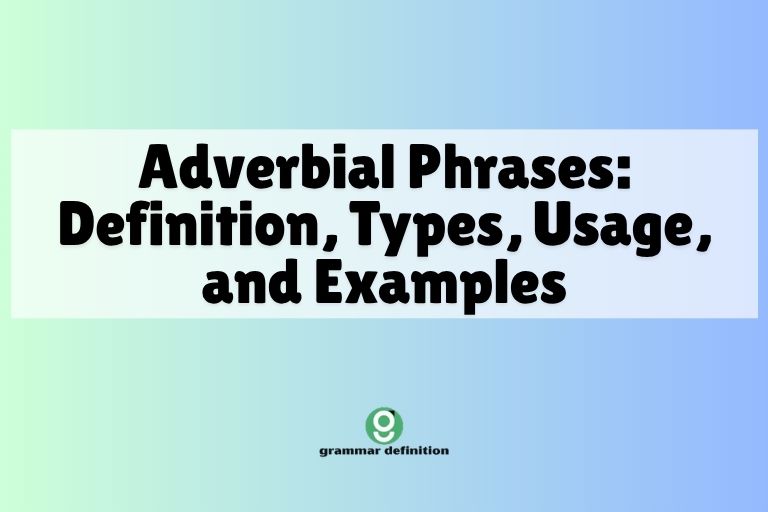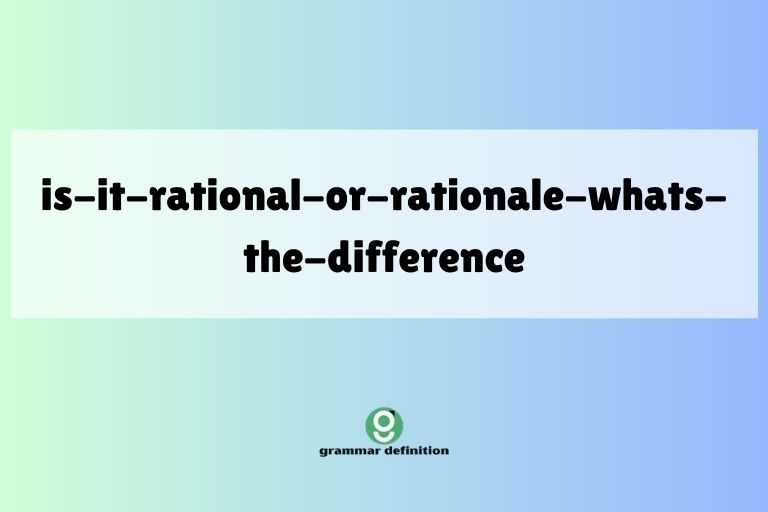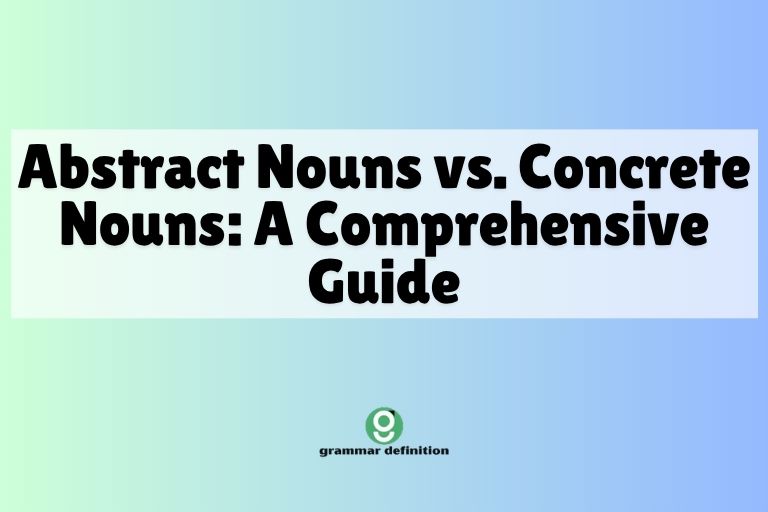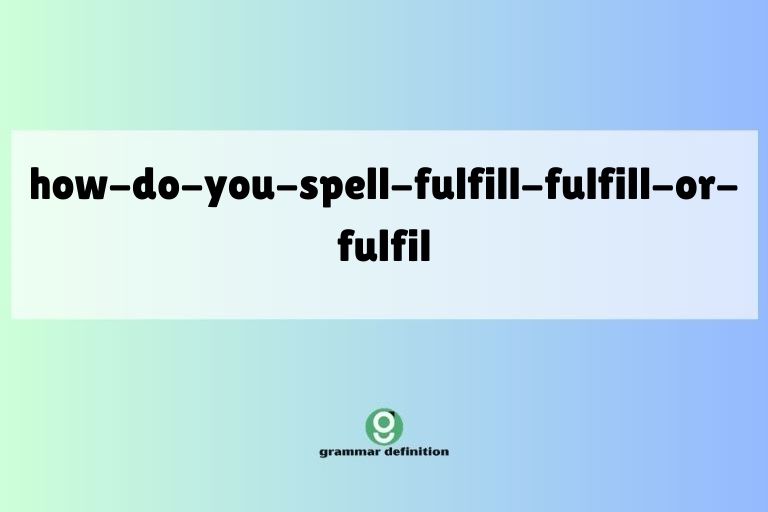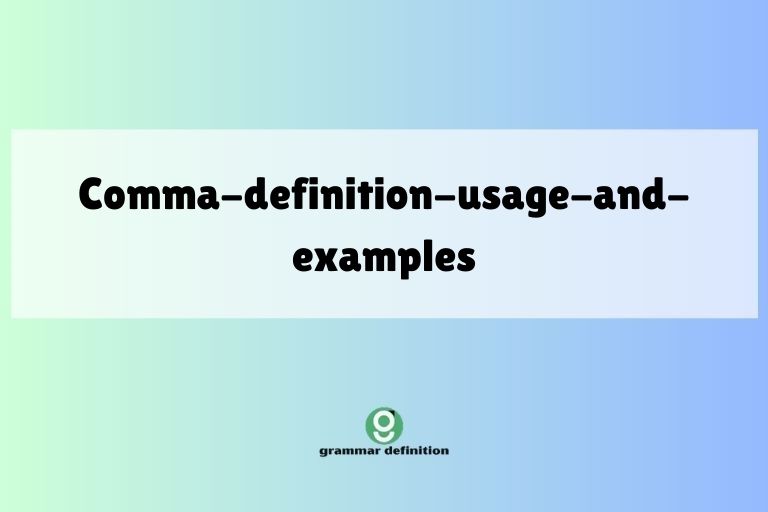Stative Verbs: Definition, Usage, and Comprehensive Examples
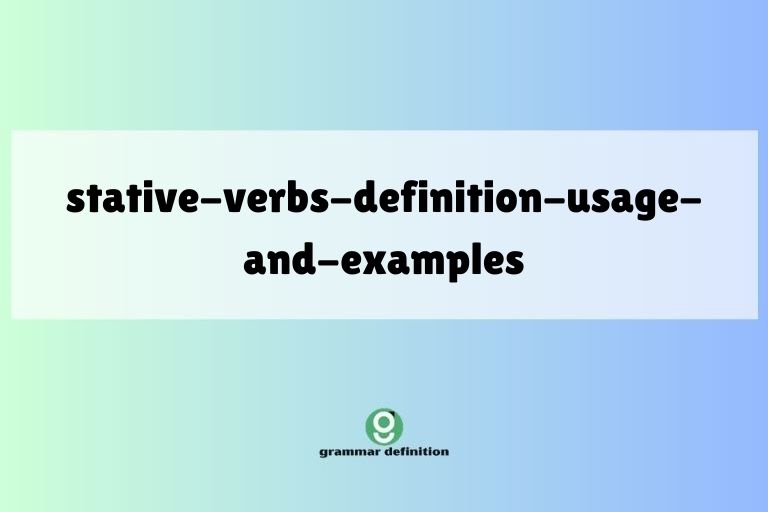
Understanding stative verbs is crucial for mastering English grammar and achieving fluency. Unlike action verbs that describe physical or mental activities, stative verbs describe states, conditions, relationships, or opinions.
Knowing how to correctly identify and use stative verbs will significantly improve your writing and speaking accuracy. This comprehensive guide provides a detailed exploration of stative verbs, including their definition, categories, usage rules, common mistakes, and practice exercises.
Whether you’re a beginner or an advanced learner, this article will help you confidently navigate the nuances of stative verbs.
Table of Contents
- Introduction
- Definition of Stative Verbs
- Structural Breakdown
- Types of Stative Verbs
- Examples of Stative Verbs
- Usage Rules for Stative Verbs
- Common Mistakes with Stative Verbs
- Practice Exercises
- Advanced Topics
- Frequently Asked Questions
- Conclusion
Introduction
Stative verbs are a fundamental aspect of English grammar that often poses challenges for learners. These verbs, unlike action verbs, describe a state of being, a condition, or a mental process rather than a physical activity.
Mastering the use of stative verbs is essential for clear and accurate communication. This guide aims to provide a comprehensive understanding of stative verbs, offering definitions, examples, and practical exercises to help you confidently use them in your everyday language.
By understanding the nuances of stative verbs, you can avoid common grammatical errors and express yourself more precisely. This article provides a structured approach to learning about stative verbs, suitable for learners of all levels.
From basic definitions to advanced usage, this guide covers everything you need to know to master this important aspect of English grammar.
Definition of Stative Verbs
Stative verbs, also known as non-continuous verbs, describe a state, condition, quality, or feeling. They contrast with dynamic verbs (also called action verbs), which describe actions or processes. Stative verbs generally do not take the continuous (-ing) form in their typical meaning. This means you usually won’t see them used in constructions like “I am knowing” or “He is believing.”
The key characteristic of a stative verb is that it describes something that is relatively unchanging or stable. It’s a state of being, a mental state, or a relationship that exists over a period of time.
Dynamic verbs, on the other hand, describe activities that are ongoing and can be observed or performed.
Stative verbs can be categorized based on the type of state they describe. These categories include verbs of emotion, possession, senses, mental states, measurement, appearance, and other states.
Understanding these categories can help you identify and use stative verbs correctly.
Structural Breakdown
The structure involving stative verbs is typically simple. They function as the main verb in a sentence, connecting the subject to a state or condition.
Because they generally don’t take the continuous form, they are most commonly used in simple tenses like the simple present, simple past, and simple future. For instance:
- Simple Present: I know the answer.
- Simple Past: She believed him.
- Simple Future: They will own the house.
While stative verbs usually avoid the continuous form, there are exceptions, which we will discuss later. The basic structure remains consistent: Subject + Stative Verb (+ Object/Complement).
The verb expresses the state, and the object or complement provides additional information about that state.
Let’s consider some structural examples:
- Subject + Stative Verb: He understands.
- Subject + Stative Verb + Object: She loves chocolate.
- Subject + Stative Verb + Complement: It seems difficult.
Types of Stative Verbs
Stative verbs can be grouped into several categories based on their meaning. Understanding these categories makes it easier to identify and use them correctly.
Here are the main types of stative verbs:
Verbs of Emotion
These verbs express feelings or emotional states. Common examples include: love, hate, like, dislike, want, need, prefer, fear, adore, appreciate, care.
Examples:
- I love chocolate.
- She hates spiders.
- They like to travel.
- He needs a vacation.
- We prefer coffee over tea.
Verbs of Possession
These verbs indicate ownership or possession. Common examples include: have, own, possess, belong, include, consist.
Examples:
- I have a car.
- She owns a house.
- This book belongs to him.
- The group consists of five members.
- The package includes a manual.
Verbs of Senses
These verbs relate to the five senses. Common examples include: see, hear, smell, taste, feel, look, sound, seem, appear.
Examples:
- I see the mountains.
- She hears the music.
- The flowers smell sweet.
- The soup tastes delicious.
- The fabric feels soft.
Verbs of Mental States
These verbs describe mental processes or states of mind. Common examples include: know, believe, understand, think, remember, forget, doubt, recognize, assume, realize.
Examples:
- I know the answer.
- She believes in ghosts.
- They understand the problem.
- He remembers the date.
- We doubt his sincerity.
Verbs of Measurement
These verbs indicate a measure, size or weight. Common examples include: measure, weigh, cost.
Examples:
- The table measures six feet long.
- The package weighs two pounds.
- The book costs ten dollars.
Verbs of Appearance
These verbs describe how something looks. Common examples include: appear, seem, look.
Examples:
- She appears happy.
- It seems easy.
- He looks tired.
Verbs of Other States
This category includes verbs that don’t fit neatly into the other categories, but still describe states. Common examples include: be, exist, matter, concern, involve.
Examples:
- I am happy.
- God exists.
- It doesn’t matter.
- The issue concerns everyone.
- The project involves several people.
Examples of Stative Verbs
The following tables provide a wide range of examples of stative verbs, categorized by type, to illustrate their usage in different contexts. These examples will help you understand how stative verbs function in sentences and how they differ from dynamic verbs.
Table 1: Examples of Verbs of Emotion
This table presents various examples of stative verbs that express feeling or emotional states, demonstrating how they are used in sentences to convey emotions and preferences.
| Verb | Example Sentence |
|---|---|
| Love | She loves to read novels in her free time. |
| Hate | I hate doing the dishes after dinner. |
| Like | They like going to the beach on weekends. |
| Dislike | He dislikes crowded places and loud noises. |
| Want | We want to travel to Europe next summer. |
| Need | She needs a new laptop for her studies. |
| Prefer | I prefer coffee over tea in the morning. |
| Fear | He fears public speaking more than anything. |
| Adore | They adore spending time with their grandchildren. |
| Appreciate | We appreciate your help with the project. |
| Care | She cares deeply about animal welfare. |
| Despise | I despise people who are rude to waiters. |
| Enjoy | They enjoy hiking in the mountains. |
| Value | He values honesty and integrity above all else. |
| Cherish | We cherish the memories we made together. |
| Respect | They respect their elders and their opinions. |
| Admire | She admires people who are passionate about their work. |
| Worship | Some cultures worship various gods and goddesses. |
| Loathe | I loathe the feeling of being unprepared. |
| Detest | She detests having to wake up early on weekends. |
| Envy | He envies people who are successful in their careers. |
| Resent | I resent being treated unfairly. |
| Pity | She pities those who are less fortunate. |
| Sympathize | We sympathize with the victims of the earthquake. |
| Trust | I trust my best friend with my deepest secrets. |
| Distrust | He distrusts people who are overly friendly. |
Table 2: Examples of Verbs of Possession
This table lists stative verbs that indicate ownership or possession, providing examples of how they are used to express who owns or controls something.
| Verb | Example Sentence |
|---|---|
| Have | I have a new car. |
| Own | She owns a beautiful house by the sea. |
| Possess | He possesses a rare collection of stamps. |
| Belong | This book belongs to the library. |
| Include | The price includes all taxes and fees. |
| Consist | The team consists of five members. |
| Contain | This box contains valuable items. |
| Comprise | The committee comprises representatives from various departments. |
| Encompass | The project encompasses several different areas. |
| Lack | They lack the resources needed to complete the project. |
| Hold | The company holds a significant share of the market. |
| Retain | The company retains the right to change the terms of service. |
| Keep | I keep all my important documents in a safe place. |
| Maintain | The building requires regular maintenance. |
| Reserve | We reserve the right to refuse service to anyone. |
| Entail | The job entails a lot of travel. |
| Involve | The project involves a lot of collaboration. |
| Cover | The insurance policy covers a wide range of risks. |
| Embody | The statue embodies the spirit of freedom. |
| Represent | The flag represents the unity of the country. |
| Boast | The hotel boasts a stunning view of the ocean. |
| Afford | We can’t afford to buy a new house right now. |
| Bear | The responsibility bears heavily on his shoulders. |
| Command | He commands a high salary in his position. |
| Yield | The investment yields a good return. |
| Grant | The university grants degrees to deserving students. |
Table 3: Examples of Verbs of Senses
This table offers examples of stative verbs related to the five senses, illustrating how they are used to describe sensory experiences and perceptions.
| Verb | Example Sentence |
|---|---|
| See | I see a bird in the tree. |
| Hear | She hears the sound of rain. |
| Smell | The flowers smell wonderful. |
| Taste | The soup tastes delicious. |
| Feel | The fabric feels soft to the touch. |
| Look | He looks tired after a long day. |
| Sound | The music sounds beautiful. |
| Seem | It seems like a good idea. |
| Appear | She appears to be happy. |
| Resemble | The child resembles his father. |
| Glimpse | I glimpsed a figure in the shadows. |
| Notice | I notice a change in her behavior. |
| Detect | The sensor can detect even the slightest movement. |
| Observe | Scientists observe the behavior of animals in their natural habitat. |
| Witness | I witnessed a car accident on the way to work. |
| Sense | I can sense that something is wrong. |
| Perceive | We perceive the world through our senses. |
| Discern | It’s hard to discern the truth from the lies. |
| Distinguish | Can you distinguish between these two colors? |
| Recognize | I recognize her from the photograph. |
| Echo | His voice echoed through the empty hall. |
| Ring | The church bells ring every Sunday morning. |
| Stink | The garbage stinks terribly. |
| Reek | The room reeked of cigarette smoke. |
| Tickle | The feather tickles my nose. |
Table 4: Examples of Verbs of Mental States
This table provides examples of stative verbs related to mental states, illustrating how they are used to express thoughts, beliefs, and cognitive processes.
| Verb | Example Sentence |
|---|---|
| Know | I know the answer to the question. |
| Believe | She believes in the power of positive thinking. |
| Understand | They understand the importance of teamwork. |
| Think | I think that’s a great idea. |
| Remember | He remembers the day they first met. |
| Forget | I often forget people’s names. |
| Doubt | We doubt the accuracy of the report. |
| Recognize | I recognize her voice immediately. |
| Assume | I assume you’re coming to the party. |
| Realize | She didn’t realize the danger she was in. |
| Imagine | Can you imagine living on Mars? |
| Suppose | I suppose that’s one way to solve the problem. |
| Consider | We are considering moving to a new city. |
| Expect | I expect you to be on time for the meeting. |
| Suspect | I suspect that he’s hiding something. |
| Presume | I presume you have all the necessary documents. |
| Judge | Don’t judge a book by its cover. |
| Estimate | We estimate the cost to be around $10,000. |
| Assess | The teacher will assess our performance on the final exam. |
| Value | I value your opinion on this matter. |
| Conclude | I conclude that he is guilty. |
| Decide | I decide to go to the store. |
| Determine | We determine the course of action. |
| Envision | I envision a brighter future. |
| Grasp | I grasp the meaning. |
| Hypothesize | Scientists hypothesize about the big bang. |
Table 5: Examples of Verbs of Measurement, Appearance, and Other States
This table provides examples of stative verbs related to measurement, appearance, and other states. These verbs are used to express qualities, dimensions, and conditions that do not involve action.
| Verb | Category | Example Sentence |
|---|---|---|
| Measure | Measurement | The room measures 12 feet by 15 feet. |
| Weigh | Measurement | The package weighs five pounds. |
| Cost | Measurement | The new car costs $25,000. |
| Appear | Appearance | She appears to be in good health. |
| Seem | Appearance | It seems like a long time ago. |
| Look | Appearance | The sky looks beautiful tonight. |
| Be | Other States | I am a student. |
| Exist | Other States | Dinosaurs no longer exist. |
| Matter | Other States | It doesn’t matter what they think. |
| Concern | Other States | The issue concerns all of us. |
| Involve | Other States | The project involves several departments. |
| Equal | Other States | Two plus two equals four. |
| Resemble | Appearance | She resembles her mother. |
| Consist | Other States | The team consists of five members. |
| Contain | Other States | The box contains important documents. |
| Depend | Other States | Success depends on hard work. |
| Deserve | Other States | You deserve a reward for your efforts. |
| Fit | Other States | These shoes fit perfectly. |
| Lack | Other States | They lack the necessary experience. |
| Mean | Other States | What does this word mean? |
Usage Rules for Stative Verbs
The primary rule for stative verbs is that they generally do not take the continuous (-ing) form. This is because they describe states rather than actions.
However, there are exceptions to this rule, which we will discuss in detail.
Stative vs. Dynamic Usage
Some verbs can be either stative or dynamic, depending on their meaning in the sentence. This is often the case with verbs of senses and mental states.
The key is to consider whether the verb describes a state or an action.
Example 1: “Think”
- Stative: I think that’s a good idea. (expressing an opinion)
- Dynamic: I am thinking about what to do this weekend. (engaging in the process of thinking)
Example 2: “See”
- Stative: I see the mountains in the distance. (describing visual perception)
- Dynamic: I am seeing a doctor tomorrow. (making an appointment with a doctor)
Example 3: “Have”
- Stative: I have a car. (describing possession)
- Dynamic: I am having a great time. (experiencing something)
Exceptions and Mixed Verbs
While stative verbs generally avoid the continuous form, there are exceptions. Verbs that can be both stative and dynamic are often called “mixed verbs.” Their usage depends on the intended meaning.
Here are some common exceptions:
- “Be”: While primarily stative, “be” can be used in the continuous form to describe temporary behavior: He is being rude. (His rudeness is temporary.)
- “Taste”: Can be dynamic when describing the act of tasting: I am tasting the soup to see if it needs more salt.
- “Look”: Can be dynamic when describing the act of looking: I am looking at the picture.
It’s important to understand the context in which these verbs are used to determine whether they should be in the continuous form or not. If the verb describes a state, it should remain in its simple form.
If it describes an action, it can take the continuous form.
Common Mistakes with Stative Verbs
One of the most common mistakes learners make is using stative verbs in the continuous form when they should be in the simple form. Here are some examples of common mistakes and their corrections:
Mistake 1: I am knowing the answer.
Correction: I know the answer.
Mistake 2: She is wanting a new car.
Correction: She wants a new car.
Mistake 3: They are believing in ghosts.
Correction: They believe in ghosts.
Mistake 4: He is having a car.
Correction: He has a car.
Mistake 5: It is seeming like a good idea.
Correction: It seems like a good idea.
Another common mistake is failing to recognize when a verb can be both stative and dynamic. It’s crucial to understand the context to use the correct form.
For example, incorrectly using ‘seeing’ when you mean ‘see’:
Mistake: I am seeing the mountains. (when simply observing)
Correction: I see the mountains.
Practice Exercises
Test your understanding of stative verbs with these practice exercises. Identify whether the verb should be in its simple form or continuous form, and correct any errors.
Exercise 1: Identify the Stative Verbs
In each sentence, identify the stative verb and explain why it is stative.
| No. | Sentence | Answer |
|---|---|---|
| 1 | I believe in hard work. | Believe (mental state) |
| 2 | She loves to dance. | Loves (emotion) |
| 3 | They have a big house. | Have (possession) |
| 4 | It seems like a good plan. | Seems (appearance) |
| 5 | He knows the answer. | Knows (mental state) |
| 6 | I need a vacation. | Need (emotion) |
| 7 | This book belongs to her. | Belongs (possession) |
| 8 | The food tastes delicious. | Tastes (sense) |
| 9 | She hates being late. | Hates (emotion) |
| 10 | We doubt his sincerity. | Doubt (mental state) |
Exercise 2: Correct the Sentences
Correct the following sentences if the stative verb is used incorrectly.
| No. | Sentence | Corrected Sentence |
|---|---|---|
| 1 | I am wanting a new phone. | I want a new phone. |
| 2 | She is knowing the truth now. | She knows the truth now. |
| 3 | They are believing in miracles. | They believe in miracles. |
| 4 | He is having a headache. | He has a headache. |
| 5 | It is seeming like rain. | It seems like rain. |
| 6 | I am needing help with this project. | I need help with this project. |
| 7 | She is preferring coffee over tea. | She prefers coffee over tea. |
| 8 | They are possessing a large collection of stamps. | They possess a large collection of stamps. |
| 9 | He is understanding the problem now. | He understands the problem now. |
| 10 | It is concerning me that she is so quiet. | It concerns me that she is so quiet. |
Exercise 3: Choose the Correct Form
Choose the correct form of the verb in the following sentences.
| No. | Sentence | Answer |
|---|---|---|
| 1 | I (think/am thinking) that you are right. | think |
| 2 | She (sees/is seeing) a doctor tomorrow. | is seeing |
| 3 | He (has/is having) a good time at the party. | is having |
| 4 | They (look/are looking) at the picture. | are looking |
| 5 | It (tastes/is tasting) delicious. | tastes |
| 6 | I (see/am seeing) the mountains in the distance. | see |
| 7 | She (feels/is feeling) the fabric to check its texture. | is feeling |
| 8 | He (appears/is appearing) to be nervous. | appears |
| 9 | They (are/are being) very helpful today. | are being |
| 10 | I (remember/am remembering) her name now. | remember |
Advanced Topics
For advanced learners, it’s important to delve deeper into the nuances of stative verbs. One advanced topic is the use of stative verbs in complex sentence structures, such as those involving subordinate clauses and participial phrases.
Another advanced topic is the use of stative verbs in literary contexts, where authors may intentionally break the rules for stylistic effect. Understanding these nuances requires a strong grasp of both grammar and literary analysis.
Additionally, exploring the historical evolution of stative verbs and their usage can provide a deeper understanding of their role in the English language. This involves studying older texts and analyzing how the usage of these verbs has changed over time.
Frequently Asked Questions
Here are some frequently asked questions about stative verbs:
Q1: What are stative verbs?
A1: Stative verbs describe a state, condition, or quality rather than an action. They typically do not take the continuous (-ing) form.
Q2: How do I identify a stative verb?
A2: Stative verbs usually fall into categories like emotion, possession, senses, mental states, measurement, appearance, and other states. If the verb describes a state rather than an action, it is likely a stative verb.
Q3: Can a verb be both stative and dynamic?
A3: Yes, some verbs can be both stative and dynamic, depending on their meaning in the sentence. For example, “think” can express an opinion (stative) or describe the process of thinking (dynamic).
Q4: Why can’t stative verbs be used in the continuous form?
A4: Stative verbs describe states that are relatively unchanging, so it doesn’t make sense to describe them as ongoing actions. The continuous form is used for actions that are in progress.
Q5: Are there any exceptions to the rule
that stative verbs generally do not take the continuous form?
A5: Yes, there are exceptions. Some verbs can be used in the continuous form when they describe temporary behavior or an action rather than a state.
For example, “He is being rude” describes a temporary behavior, while “He is rude” describes a general state.
Q6: How can I improve my understanding of stative verbs?
A6: The best way to improve your understanding of stative verbs is to practice identifying them in different contexts. Pay attention to how they are used in sentences and whether they describe a state or an action.
Also, be aware of the exceptions and mixed verbs.
Q7: What are some common stative verb mistakes to avoid?
A7: Common mistakes include using stative verbs in the continuous form when they should be in the simple form, and failing to recognize when a verb can be both stative and dynamic. Always consider the context and meaning of the verb in the sentence.
Conclusion
Mastering stative verbs is essential for accurate and fluent English communication. By understanding the definition, categories, and usage rules of stative verbs, you can avoid common grammatical errors and express yourself more precisely.
Remember that stative verbs describe states, conditions, or qualities, and generally do not take the continuous form. However, be aware of the exceptions and mixed verbs that can be both stative and dynamic depending on their meaning in the sentence.
Continue to practice identifying and using stative verbs in various contexts to solidify your understanding. With consistent effort, you’ll be able to confidently navigate the nuances of stative verbs and improve your overall English proficiency.
Use the examples and exercises provided in this guide as a starting point, and always pay attention to how stative verbs are used in real-world communication.

